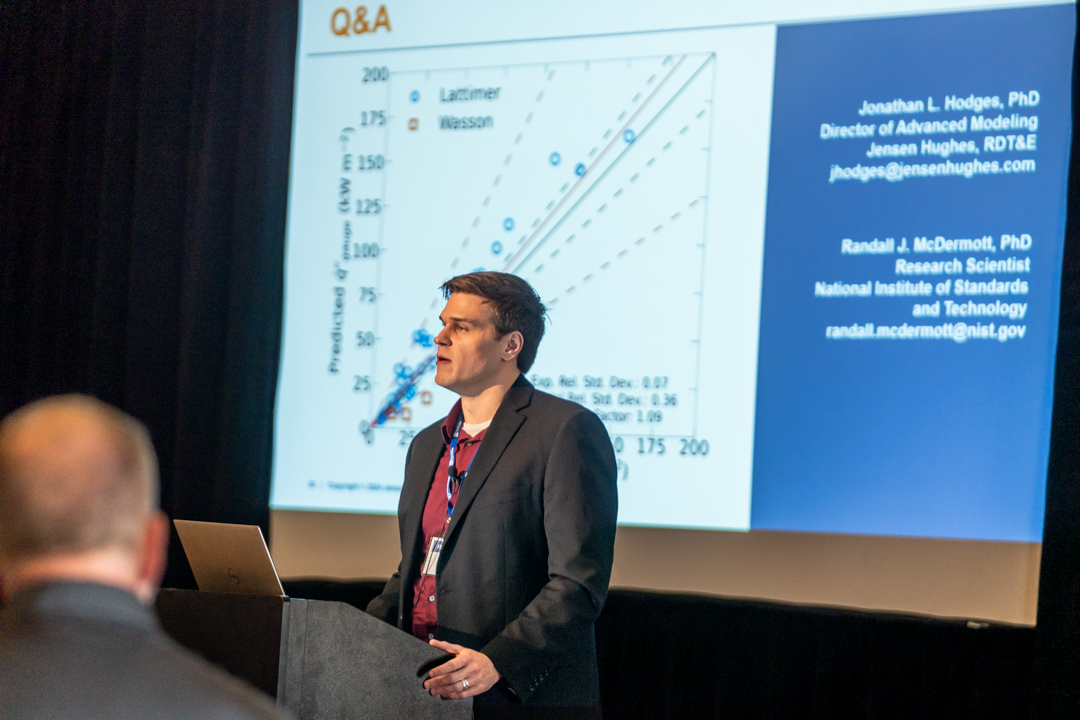FEMTC 2024 Videos are Available Now
We’re thrilled to report on the 7th annual Fire and Evacuation Modeling Technical Conference (FEMTC), held in Kansas City this September! This unique event, the only one focused solely on fire, evacuation, and pedestrian movement modeling, brought together nearly 90 attendees from all over the world.
Half of the participants joined in person at a historic hotel in downtown Kansas City, while the rest participated virtually. Over 30 presentations were delivered, covering a wide range of topics and sparking lively discussions among attendees. You can now access all the presentations, including those featuring our keynote speakers, at FEMTC 2024 Presentations.
Just as we've done since the first FEMTC in 2011, all presentations are freely available on the FEMTC event page for free viewing.
Here are a couple of summarized highlights from the event.
Convective Heat Transfer from Impinging Flames
Jonathan Hodges (Jensen Hughes) and Randall McDermott (NIST) presented an implementation of an existing impinging jet heat transfer relationship in Fire Dynamics Simulator (FDS).

FDS incorrectly predicts low heat transfer when a fire directly hits a surface, unlike real-world experiments where heat transfer is highest at that point. This presentation introduces a new method to more accurately model this "impinging jet" heat transfer in FDS. The new model's predictions are compared against experimental data to assess its impact on heating structural elements.
The Influence of Calibrated Movement Data on Movement Egress Times in Computational Simulation Modeling
Raeshawn Kennedy of Goodhead Consulting Engineers presented an intriguing talk on quantifying the movement time error introduced by the use of default settings for occupant physical parameters in the Pathfinder egress modeling software. The analysis found that RSET movement times calculated using calibrated occupant data were up to 100% longer than RSET movement times calculated using default settings. This difference in RSET movement times is an item of significant safety importance.

Additionally, calibrated physical occupant parameters for identified user groups were compared between two large geographically disparate airports located within the United States.
To view the full list of presentation videos, visit the FEMTC 2022 event page.
